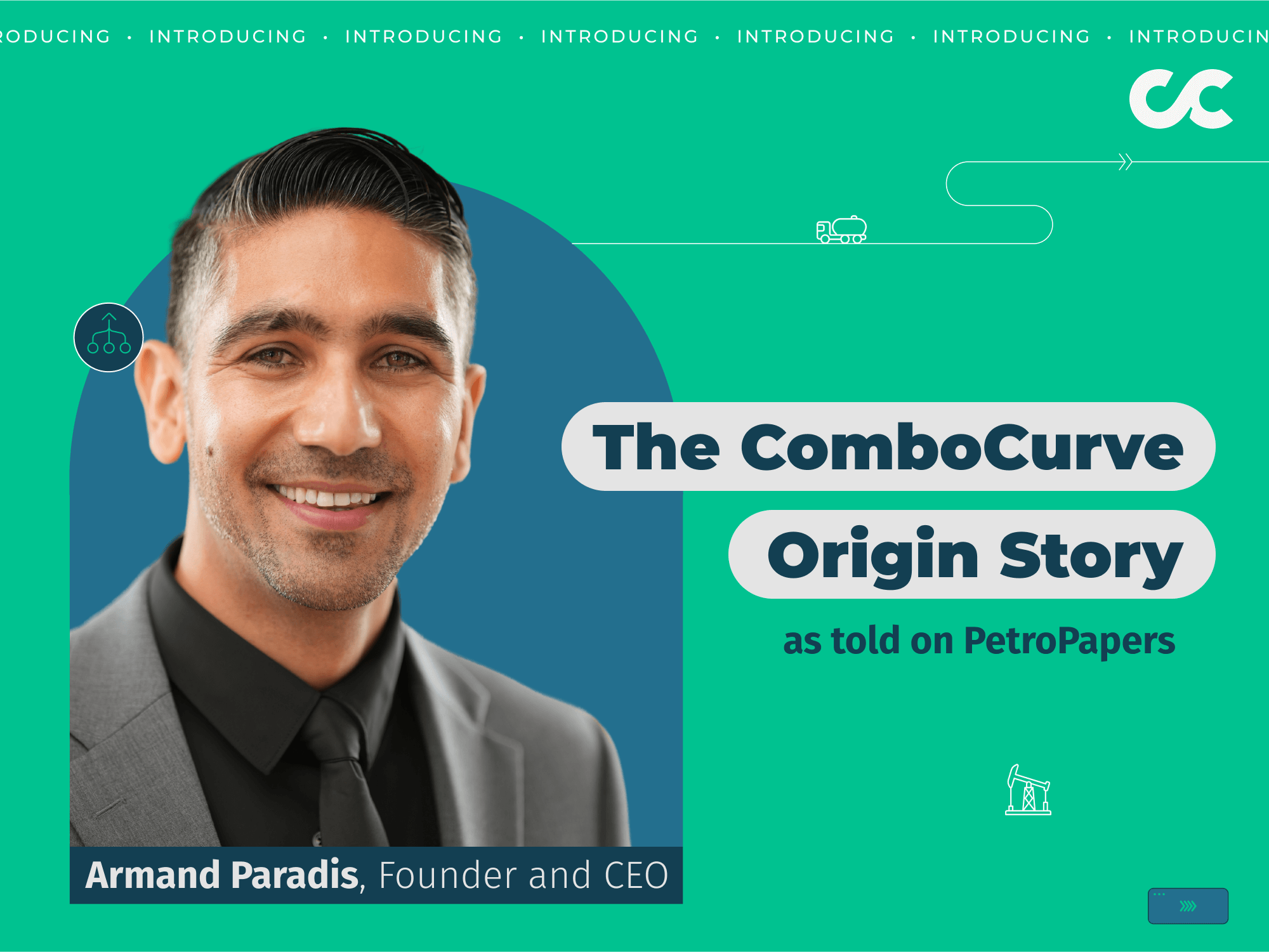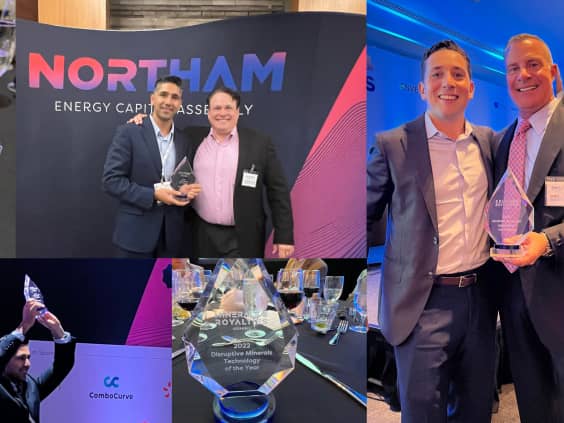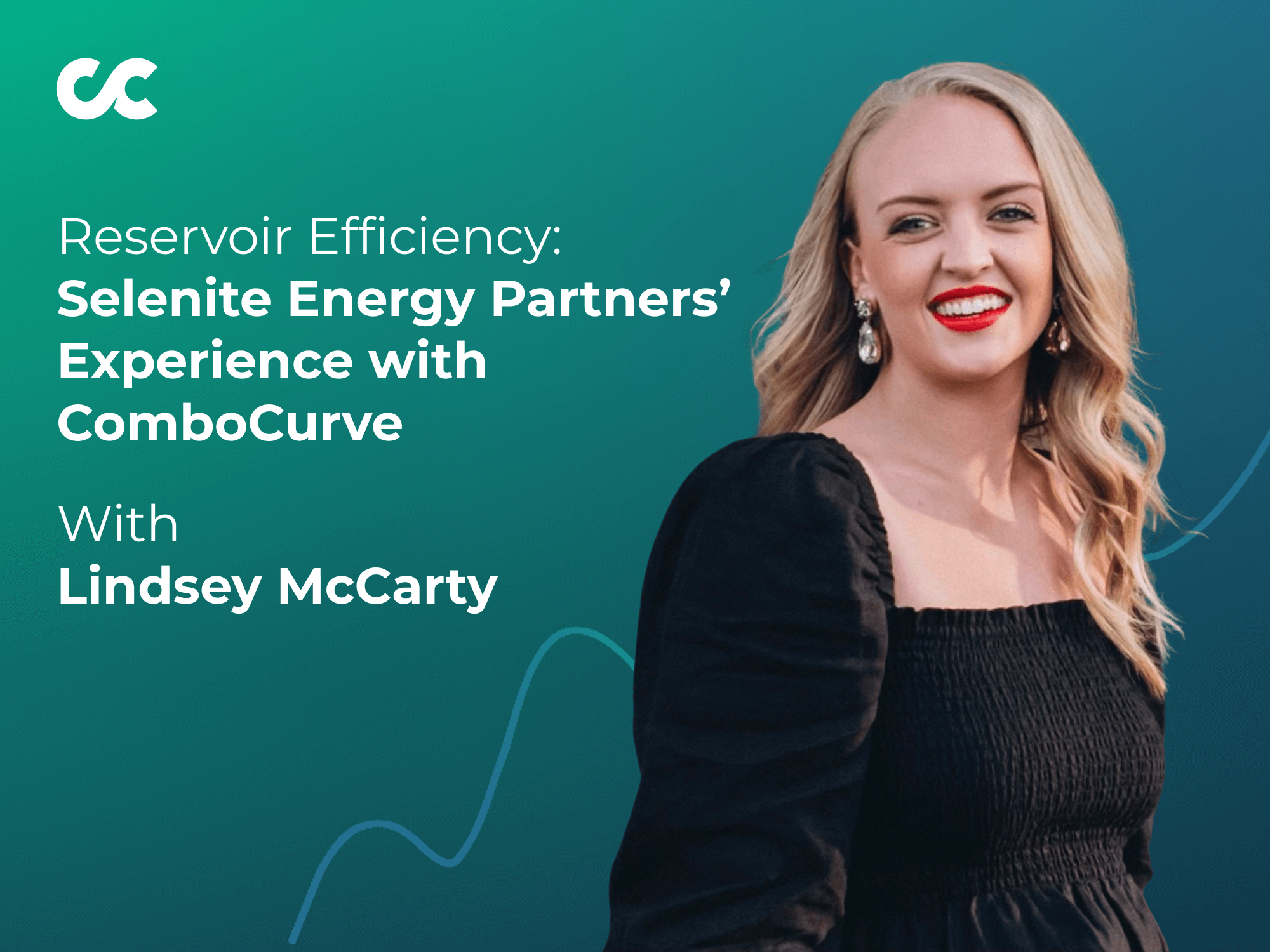The ComboCurve Origin Story
Having launched just four years ago in 2020, ComboCurve has emerged as a frontrunner in the oil and gas tech space, surpassing legacy software that has dominated the industry for over four decades. Ever wondered how ComboCurve came to be?
Founder and CEO, Armand Paradis, recently joined Yogashri Pradhan, host of the PetroPapers podcast, to discuss how the pressing need for a more efficient solution in the industry, frustrations with the limitations of legacy workflows, and his driving force were behind the development of ComboCurve. Additionally, he provided insights into ComboCurve's ongoing developments and refinements, the company's remarkable growth, and his vision and direction for its future.

“In today’s day and age, we deserve better tools and better software that makes us more efficient so we can enjoy our day-to-day job.” – Armand Paradis, Founder & CEO, ComboCurve
From Reservoir Engineer to Tech Innovator
Armand Paradis, a seasoned petroleum engineer specializing in reservoir engineering, began his career journey with a solid foundation in the energy sector. With a Bachelor’s and Master’s degree from the University of Louisiana at Lafayette, Armand had amassed valuable E&P experience at Metairie Energy before transitioning to Equinor, where he managed their US onshore assets, mainly Marcellus and Utica.
However, it was his hands-on experience with legacy workflows that propelled him towards innovation. Frustrated by the limitations of existing software solutions that struggled to handle the large amounts of data inherent in the oil and gas industry, Armand recognized a pressing need for change. “I worked there [Equinor] for two years and then I left Equinor to start ComboCurve.”
Identifying a Critical Gap: The Beginning of ComboCurve
Armand’s day-to-day responsibilities as a reservoir engineer exposed him to the inefficiencies plaguing traditional software solutions in the industry.
“ComboCurve started from my day-to-day job. I’m a reservoir engineer, so my job was to forecast volumes, and run economics, and propose best areas to invest in, and how we complete our wells, and the areas of opportunities, and evaluate AFE’s, evaluating basins etc.”
He found himself navigating through a fragmented workflow, jumping between disparate platforms like ARIES, Excel, and Spotfire, leading to cumbersome processes and potential errors.
“I was using software similar to ARIES, Enersight, Excel, and Spotfire. So what I realized is it’s a choppy workflow – we have to jump from one software to another software for part of the workflow, and each time you jump from one software to another software you have to deal with a lot of conversions and mismatching between the numbers.”
Making Big Decisions Using Outdated Tools
Armand expressed his shock at the stark contrast between the industry’s continued reliance on outdated technology and the advancements seen in other sectors, especially the use of ARIES in making capital decisions in the industry.
“It was absolutely surprising to me that we’re still using it [ARIES]. If you look at all the other industries and the level of technology that they are using to manage such an important workflow. We’re using ARIES to make very important capital decisions! You’re talking about multimillion, multibillion-dollar decisions and we’re using software from 40, 50 years ago to make those decisions. It just doesn’t make sense. It doesn’t even have a lot of functionality that we need in this day and age.”
He elaborated on the lack of functionality and complexity inherent in ARIES in meeting the complex needs of modern-day oil and gas operations, where forecasting wells lacked essential geographical context, hindering proper analysis and learning, and leading to error-prone forecasts.
“In ARIES, I was forecasting wells without even having access to the map. I didn’t even know where the wells were located, I couldn’t see wells with a similar completion design, similar areas, or similar landing zones, so I could learn from the other zones, and I could forecast my wells better. And when I did the research, I figured ARIES is the solution for most of the operators. And I realized there’s a problem.”
“Energy is all about big data, correct?”
Thorough market research confirmed that Armand wasn’t alone in facing challenges using ARIES or similar software like PhDWin encountered the same issues.
“They’re all having the same issues. They’re dealing with a lack of functionality, lack of speed, very manual process, and lack of visualization. They [legacy tools] are not designed for this modern unconventional analysis, and you can’t even do math analyses. They can’t handle huge amounts of data and energy is all about big data, correct? They can’t even handle large counts of wells. And so many, many other issues.”
“I want the learning curve to be much faster”
Expressing frustration with the prolonged learning process and the desire for a faster and more efficient learning curve, Armand Paradis emphasized the need for improved tools and solutions in the industry: “So that I don’t suffer, go through 10 years of learning and then I’m still learning – I want the learning curve to be much faster.”
Driven by a relentless pursuit of efficiency and a belief that there had to be a better way, Armand set off on a mission to create a more sophisticated solution that would streamline workflows and empower oil and gas professionals to leverage the power of big data. He recognized the need for a comprehensive platform that seamlessly integrated forecasting, economics, mapping, and visualization, eliminating the need to navigate multiple disjointed applications. Thus, ComboCurve was born.
A Disruptive Solution to Improve Workflows
ComboCurve emerged as a game-changer in the industry, offering engineers a single platform that addressed their diverse needs. By eliminating the need to navigate between multiple software tools, ComboCurve has enabled engineers to conduct analyses and make decisions with efficiency and accuracy. The platform’s intuitive interface and advanced features, including daily resolution capabilities and seamless integration with other software tools, quickly garnered widespread acclaim within the industry.
“It [developing ComboCurve] was a very educated decision for me.” Armand reflects, “I knew it’s a very, very big complex project at the same time as well. So it’s a multi-year project. And the industry has been very, very receptive and very cooperative with us”
A Journey of Growth and Innovation
Where it started vs. Where it’s going
ComboCurve has witnessed rapid growth and adoption within the industry and continues to set high standards across all departments, striving to be the best in customer service, software development, marketing, and beyond.
ComboCurve grew from 30 full-time employees to 100+ people in 3 years. Armand proudly commends the team’s commitment to constant evolution, driven by feedback from the market and a relentless pursuit of excellence.
“We make sure to keep the bar high for everybody you know, constantly improving, constantly becoming better. So our goal is to be the best in each department. Right now we have the best customer service I can claim in the world. Less than two minute response time with the engineer sitting on Zoom, making sure that they listen to you and solve your problem. And we want the same thing for all the other departments. We want to be the best in software development, the best in marketing, and the best in basically all the other disciplines, you know. So we are always keeping the bars high and pushing people to be more ambitious with their goals.”
Within two years post-release, ComboCurve quickly became the go-to solution for close to 370 clients spanning across individual operators, from major corporations to banks and financial institutions.
“It’s been fantastic traction. We have all types of companies using our product. We have single-man shops all the way to majors using our product. We have banks, auditors and financial institutions, and invested mineral companies using our product. We even have midstream companies using our product.”
Integrating Carbon Solutions
Armand and his team remain committed to enhancing ComboCurve’s capabilities, with recent additions including much-needed carbon forecasting and carbon planning features.
In light of the new rules recently rolled out by the Securities and Exchange Commission (SEC) to standardize climate-related disclosures by public companies, which include strategies for emissions reduction, profitability, and reserve risk management, Combocurve’s carbon forecasting and planning features help oil and gas businesses navigate these challenges effectively. [Learn more]
What’s next?
Armand’s vision for ComboCurve goes beyond mere convenience; he aimed to disrupt the industry’s approach to reservoir engineering by addressing the inefficiencies and limitations of existing software and leveraging modern technology.
Looking ahead, ComboCurve remains committed to innovation and continuous improvement, with plans to further refine the A&D workflow, explore the integration of artificial intelligence, and shape the future of reservoir engineering, further solidifying its position as the premier software solution for reserves, A&D, and emissions management.
As Armand expressed, “It’s been a dedication since 2017. Non-stop working and staying on top of things. So it is a very big project, but again we have software that a lot of people love to use, but we never stopped improving. So that’s our goal. We want to constantly get feedback from the market and make it better, faster, and also add more bells and whistles.”
See how your team can go from forecast to economics in minutes with energy’s fastest analysis engine.
Related Posts
January 17, 2023
ComboCurve Disrupts Energy Industry Awards Season
"We have an incredibly skilled team of passionate people solving important problems. ComboCurve is thrilled to be recognized as a leader in energy expansion."
October 3, 2023
Commit to ComboCurve for Reserves
Luke Cone joined ComboCurve a few years ago to contribute to streamlining reservoir engineering processes. His subsequent move to Grit Oil & Gas saw him advocating for ComboCurve's integrated solutions, specifically in using ComboCurve for reserves.
August 7, 2023
Reservoir Efficiency: Selenite Energy Partners’ Experience with ComboCurve
As the Chief Operating Officer of Selenite Energy Partners, a structured capital finance company, Lindsey McCarty has been navigating the nuances of oil and gas for over 15 years.


